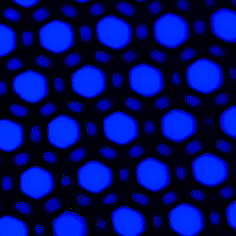Fluorescence-based fibre optic arrays: a universal platform for sensing
Abstract
Optical fibres provide a universal sensing platform as they are easily integrated with a multitude of different sensing schemes. Such schemes enable the preparation of a multitude of sensors from relatively straightforward pH sensors, to more complex ones, including artificial olfaction sensors, high-density oligonucleotide arrays, and high-throughput cell-based arrays. Imaging fibre bundles comprised of thousands of fused optical fibres are the basis for an optically connected, individually addressable parallel sensing platform. Fibre optic imaging bundles possess miniature feature sizes (3–10 micron diameter fibres), allowing high-density sensor packing (∼2 × 107 sensors per cm2). Imaging fibre bundles transmit coherent images enabling combined imaging and sensing, relating the responses monitored by the sensor to observable physical changes. The individual fibre cores can also be selectively etched to form a high-density microwell array capable of housing complementary sized microsensors. The miniature feature sizes facilitate a faster response and more sensitive measurement capabilities. The platform is extremely versatile in its sensing design, allowing the sensing scheme to be tailored to fit the experimental design, whether for monitoring single analytes or more complex multiplexed assays. A number of sensing schemes and applications are described in this review.


 Please wait while we load your content...
Please wait while we load your content...